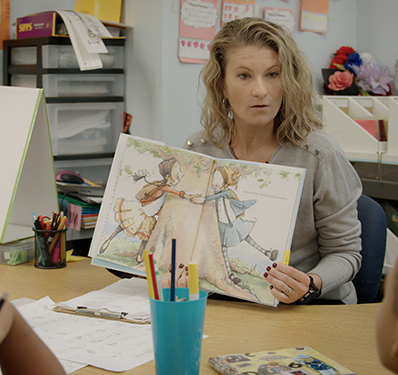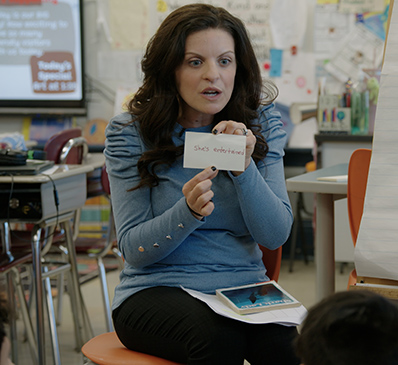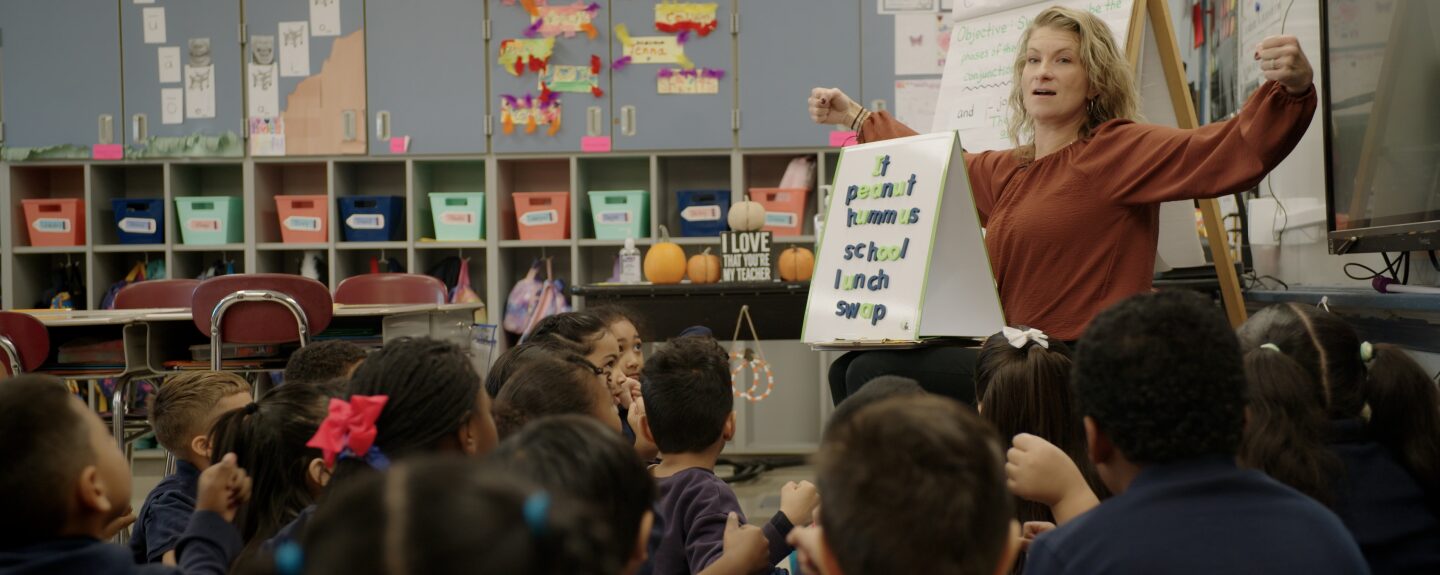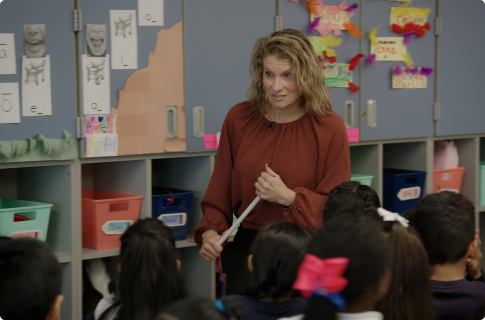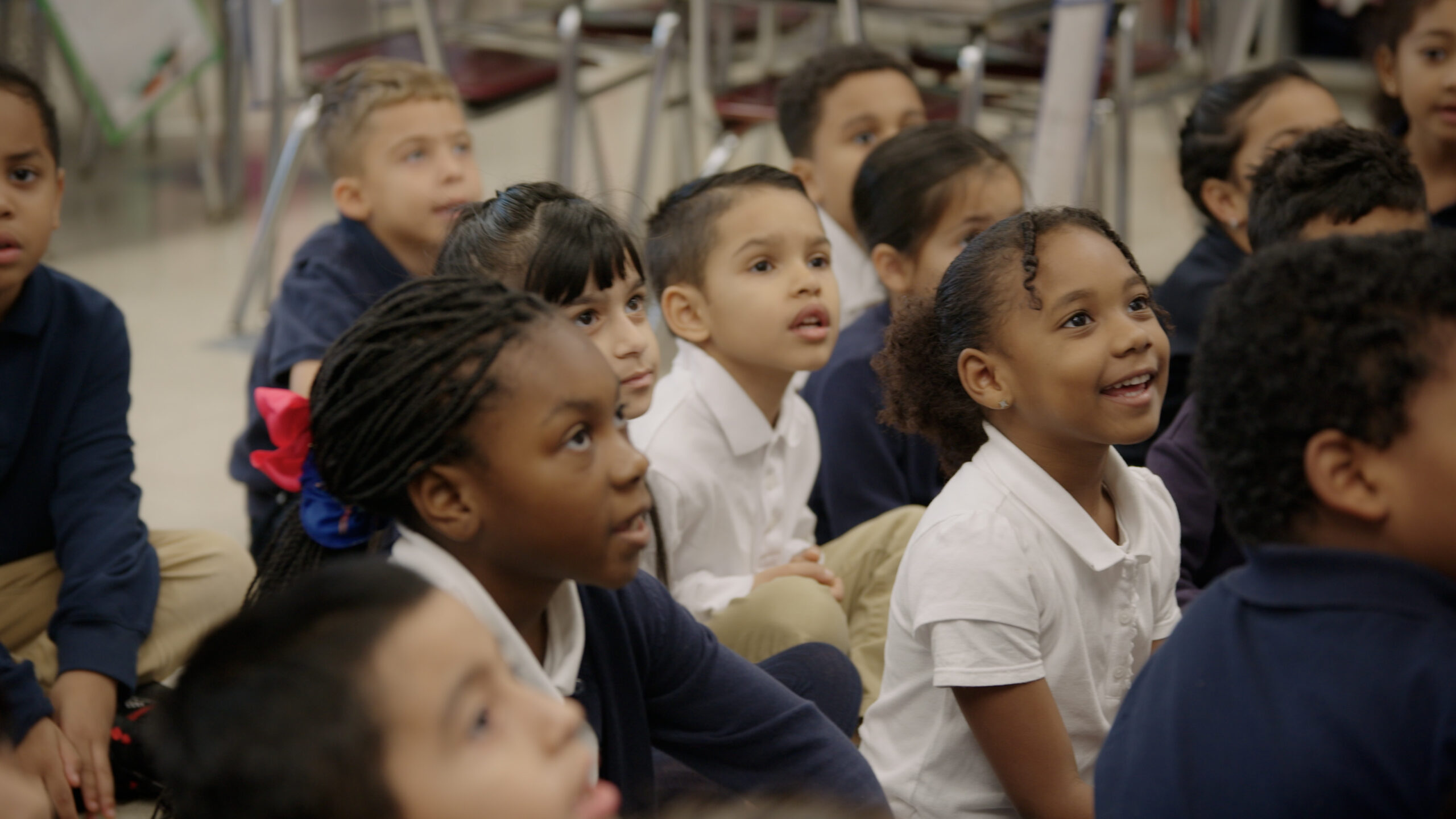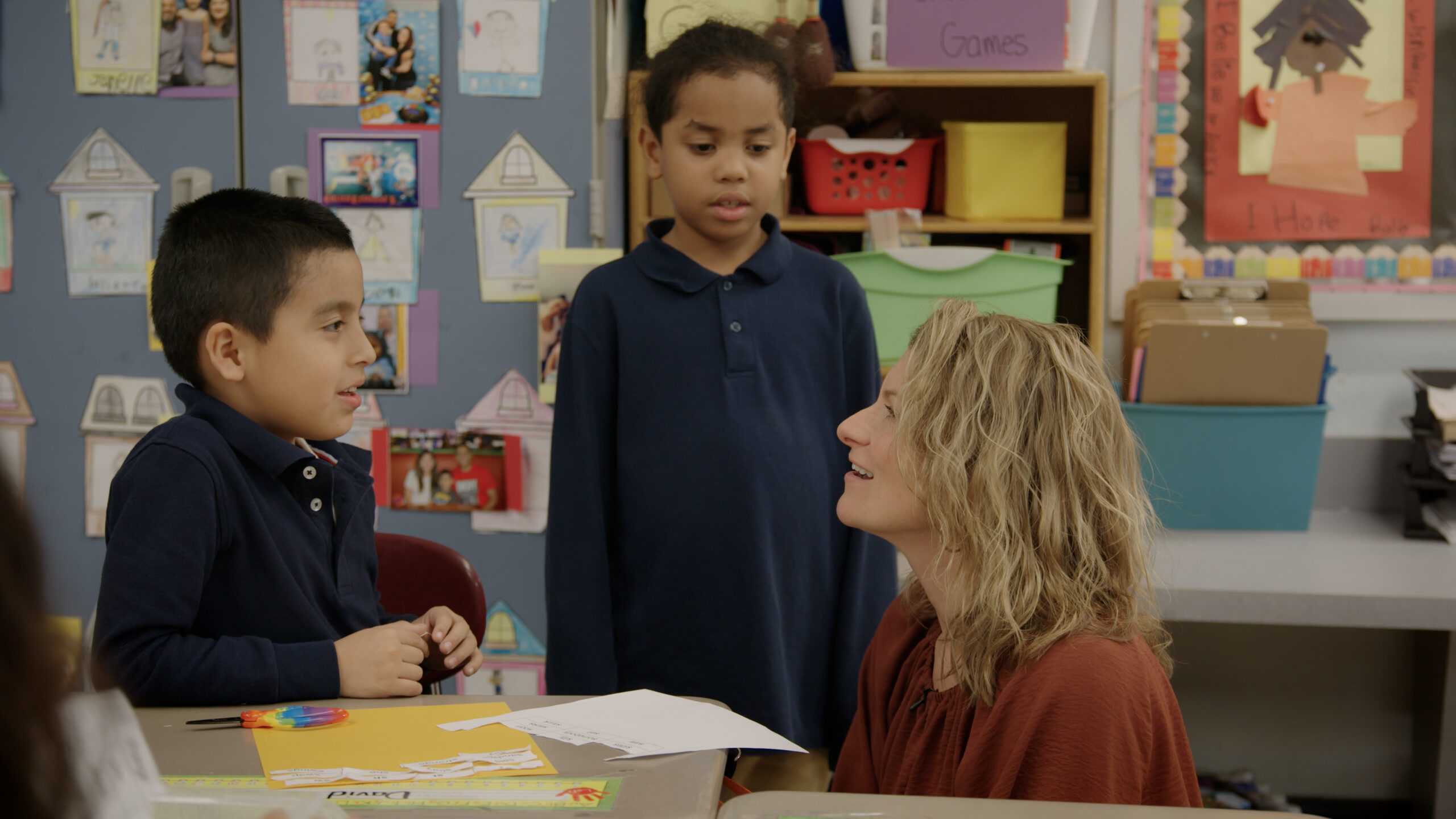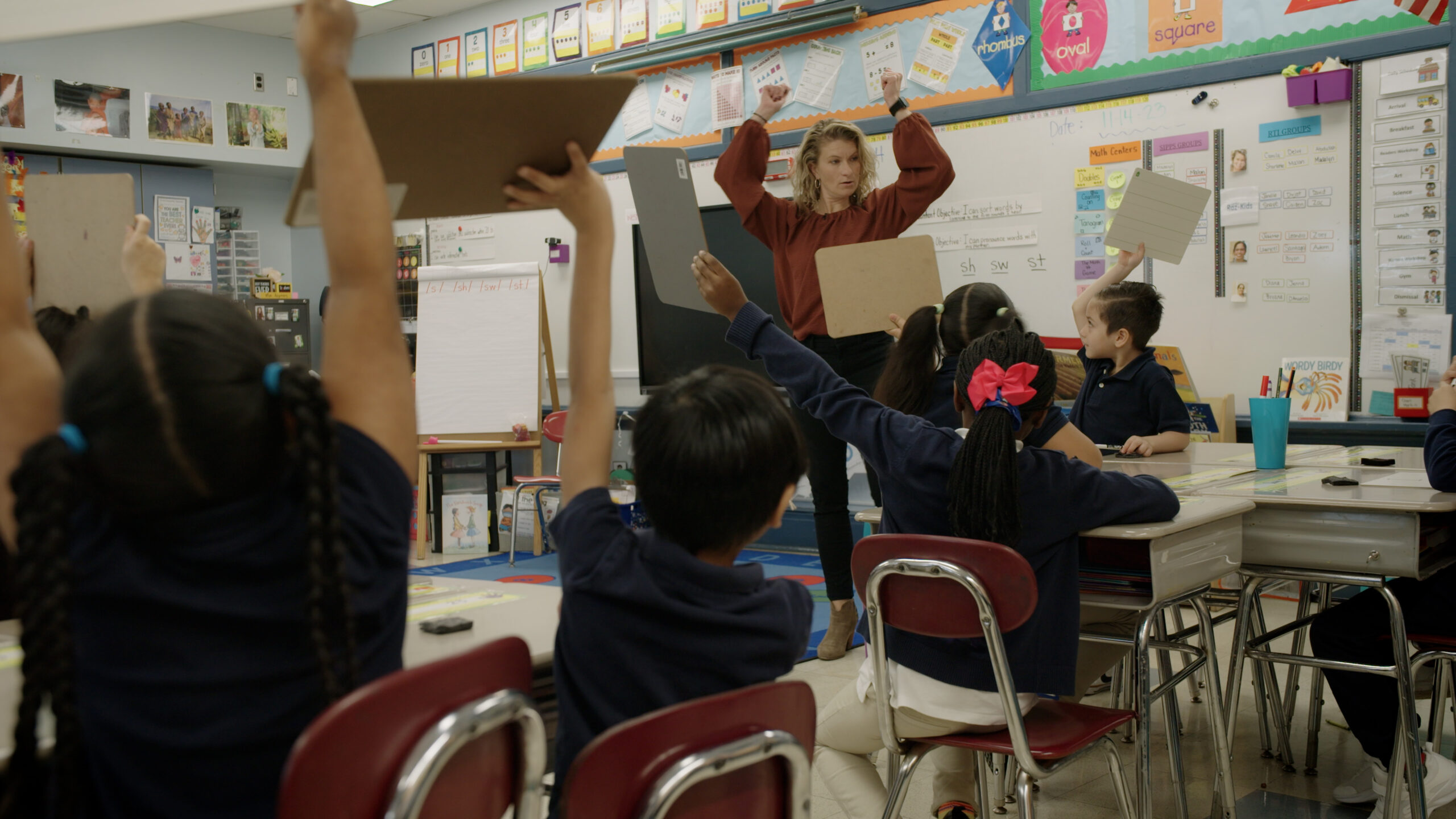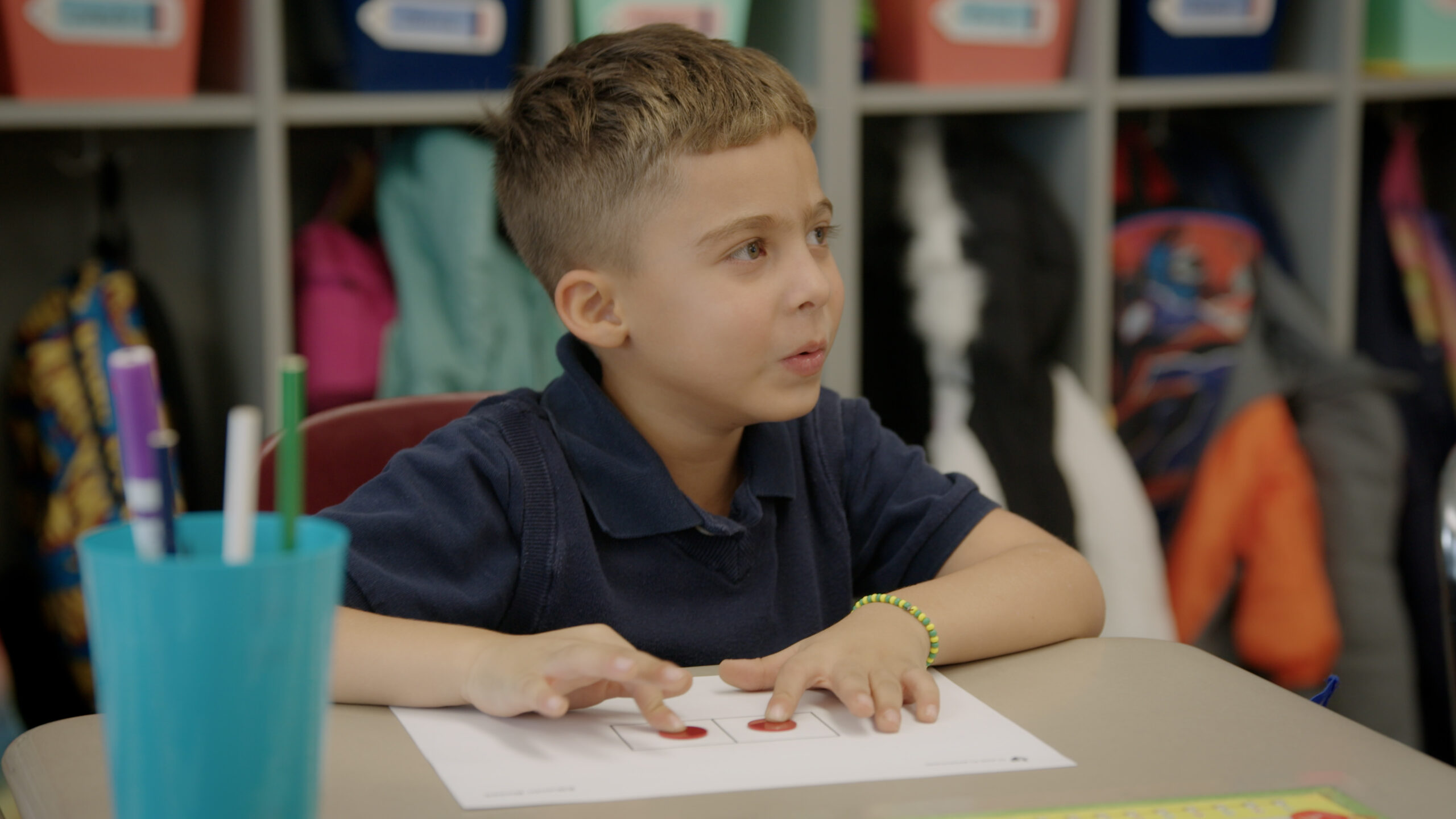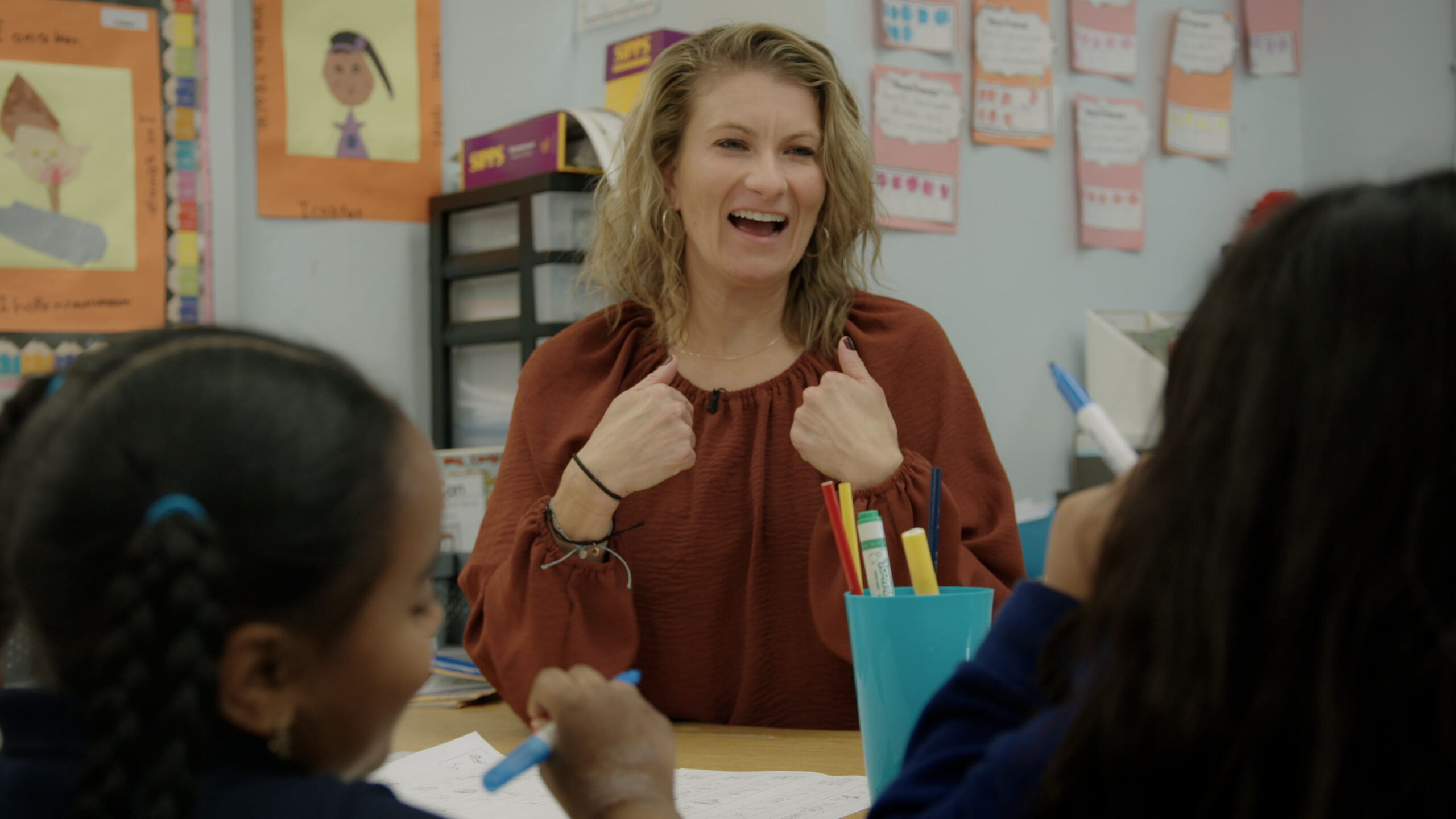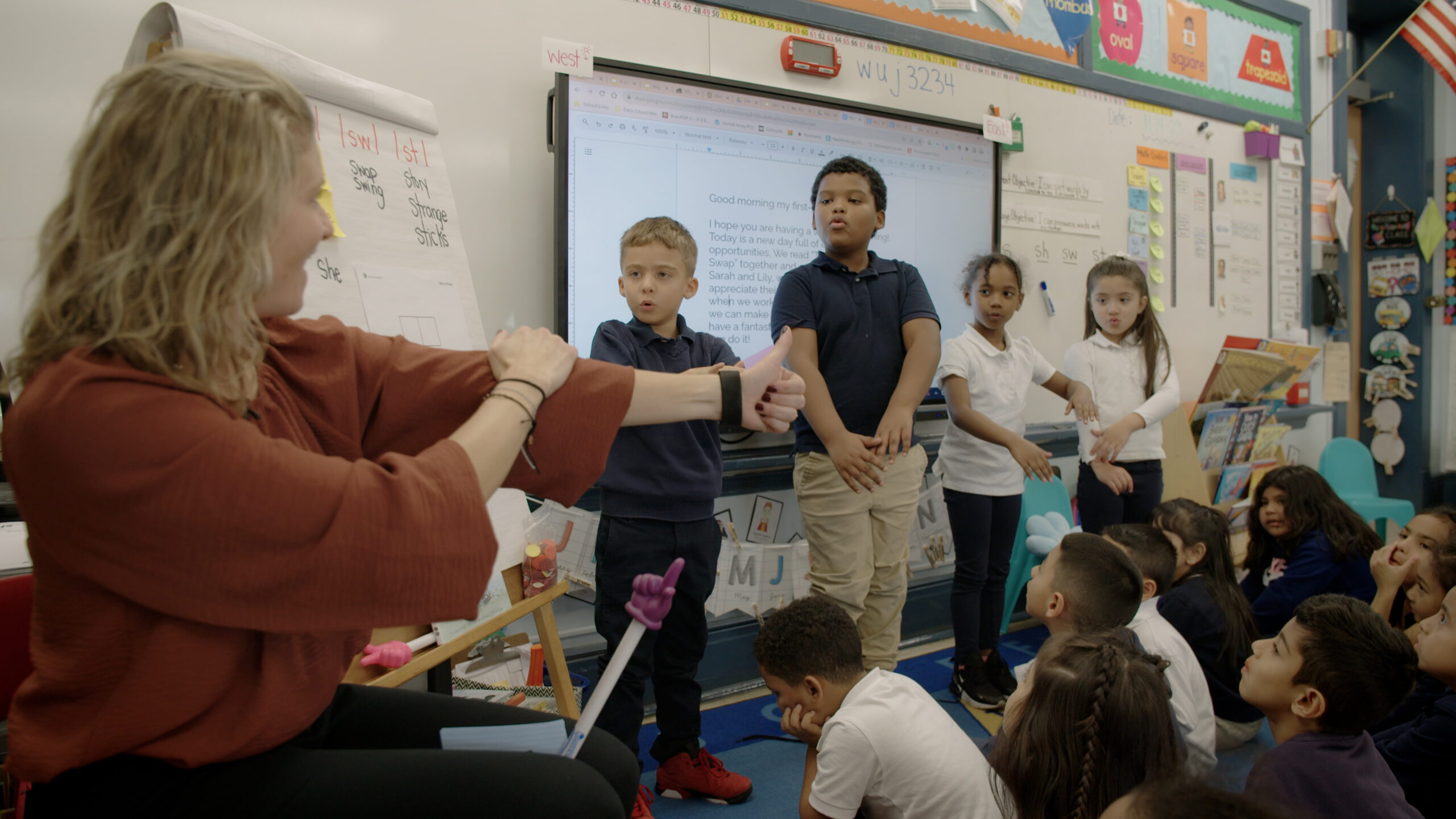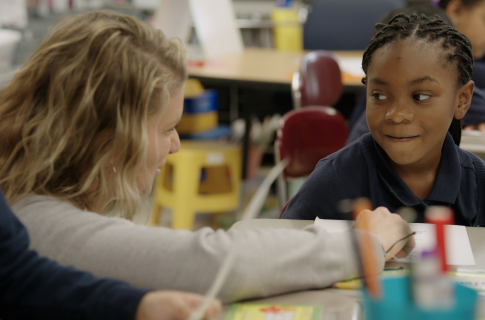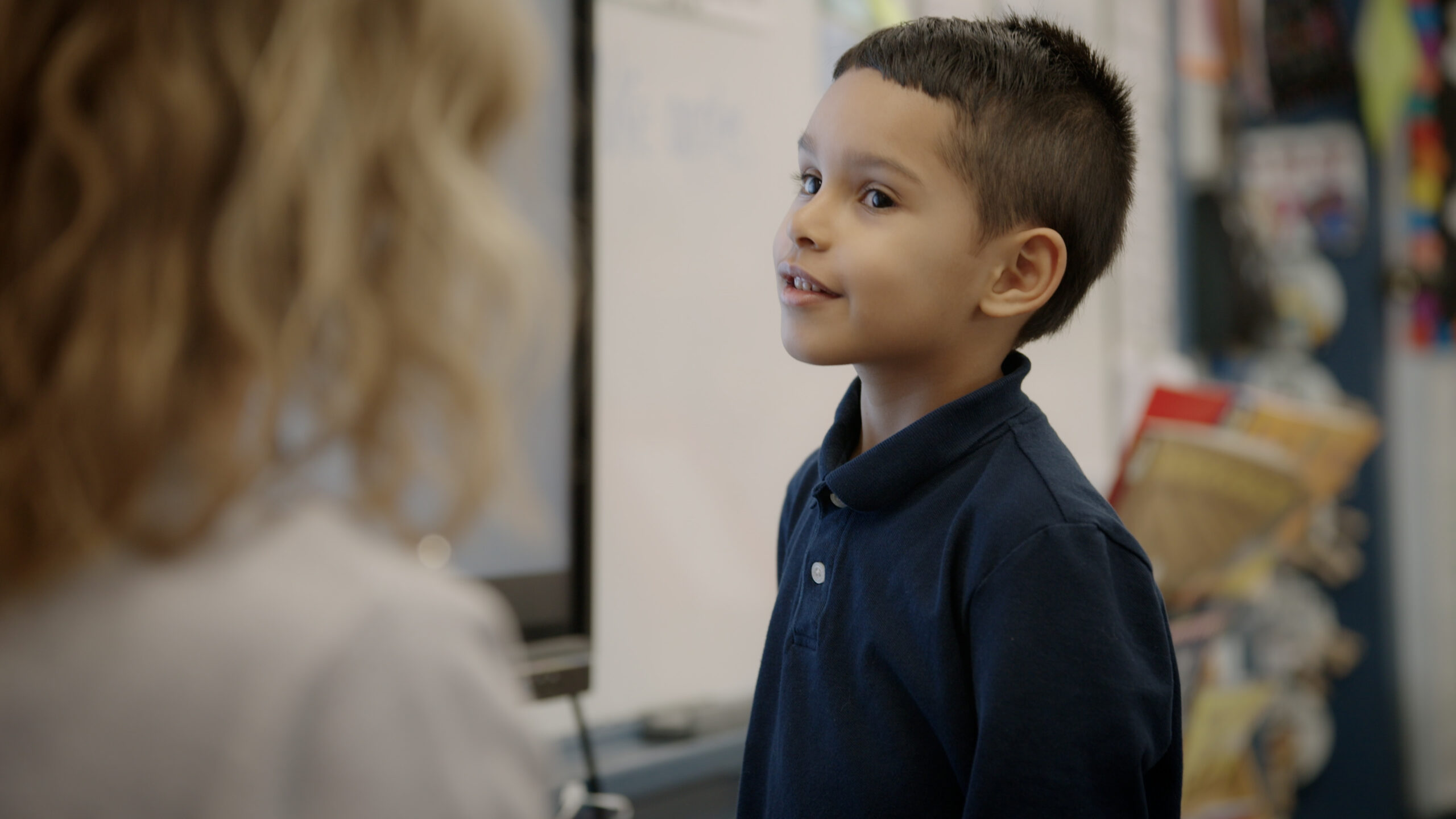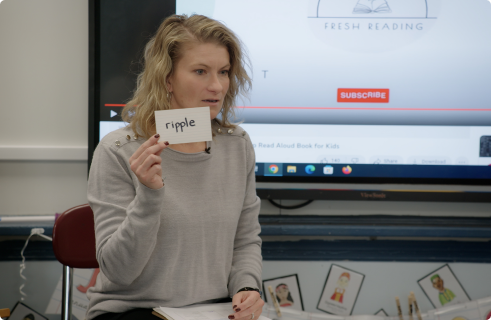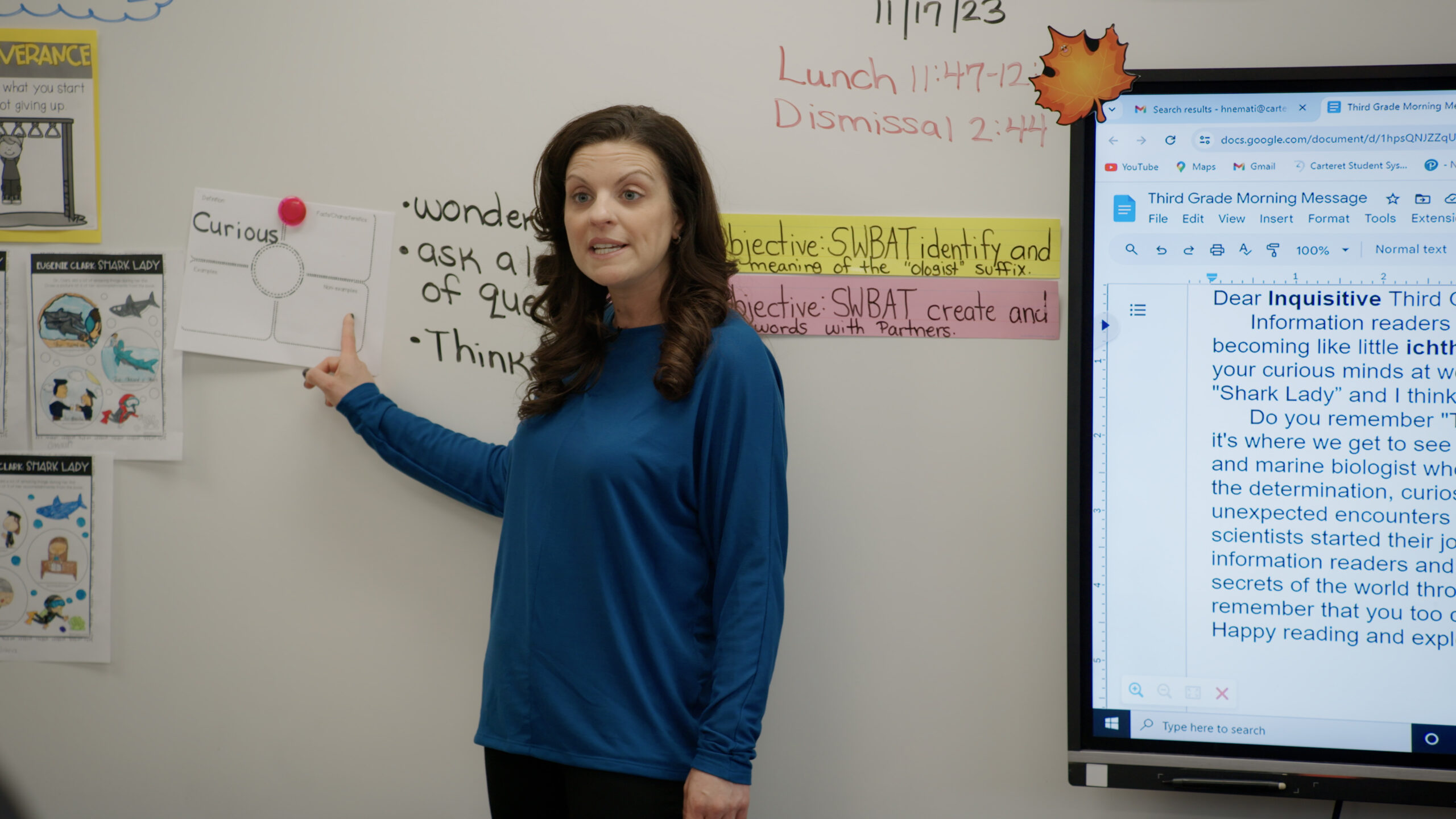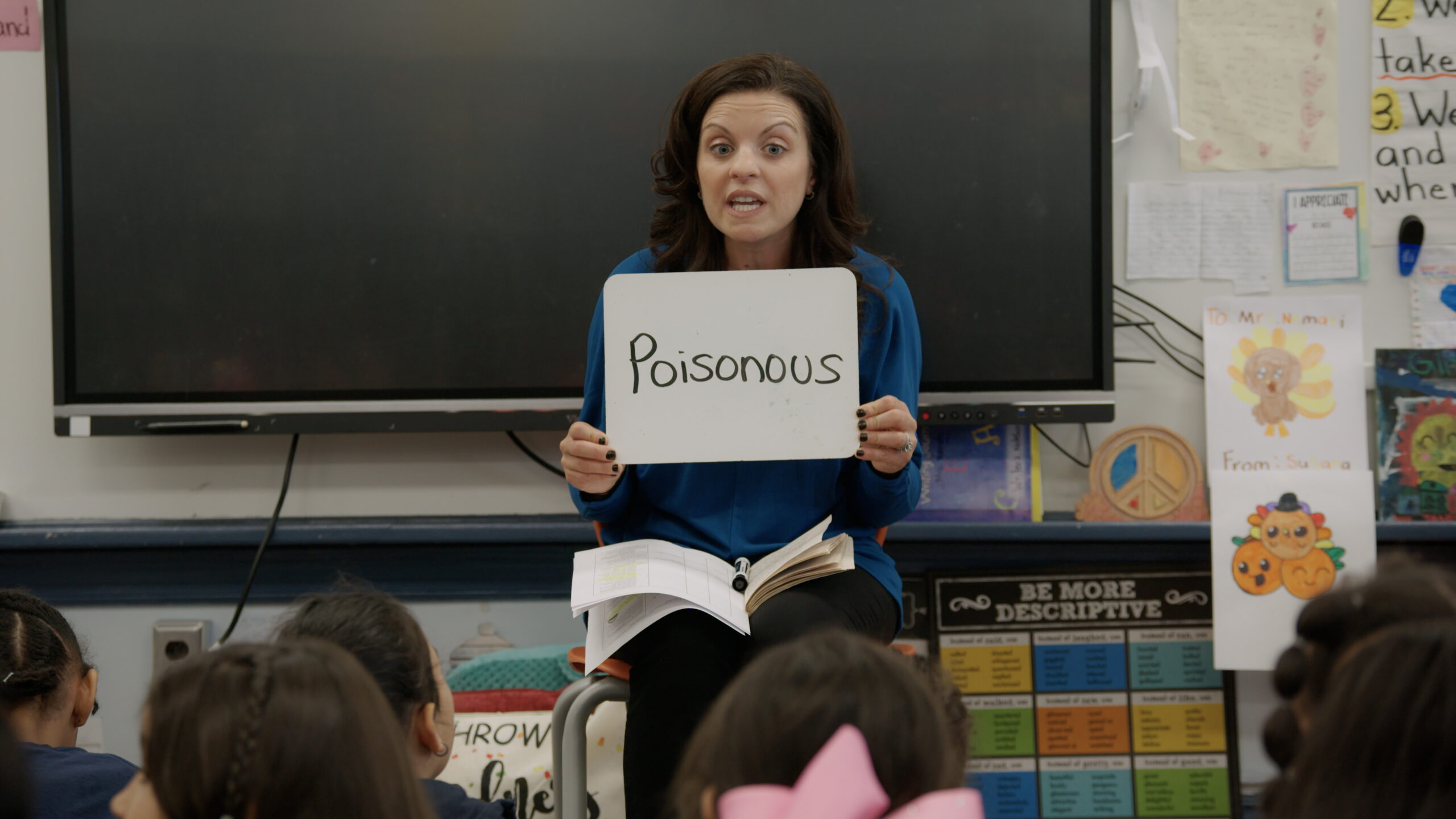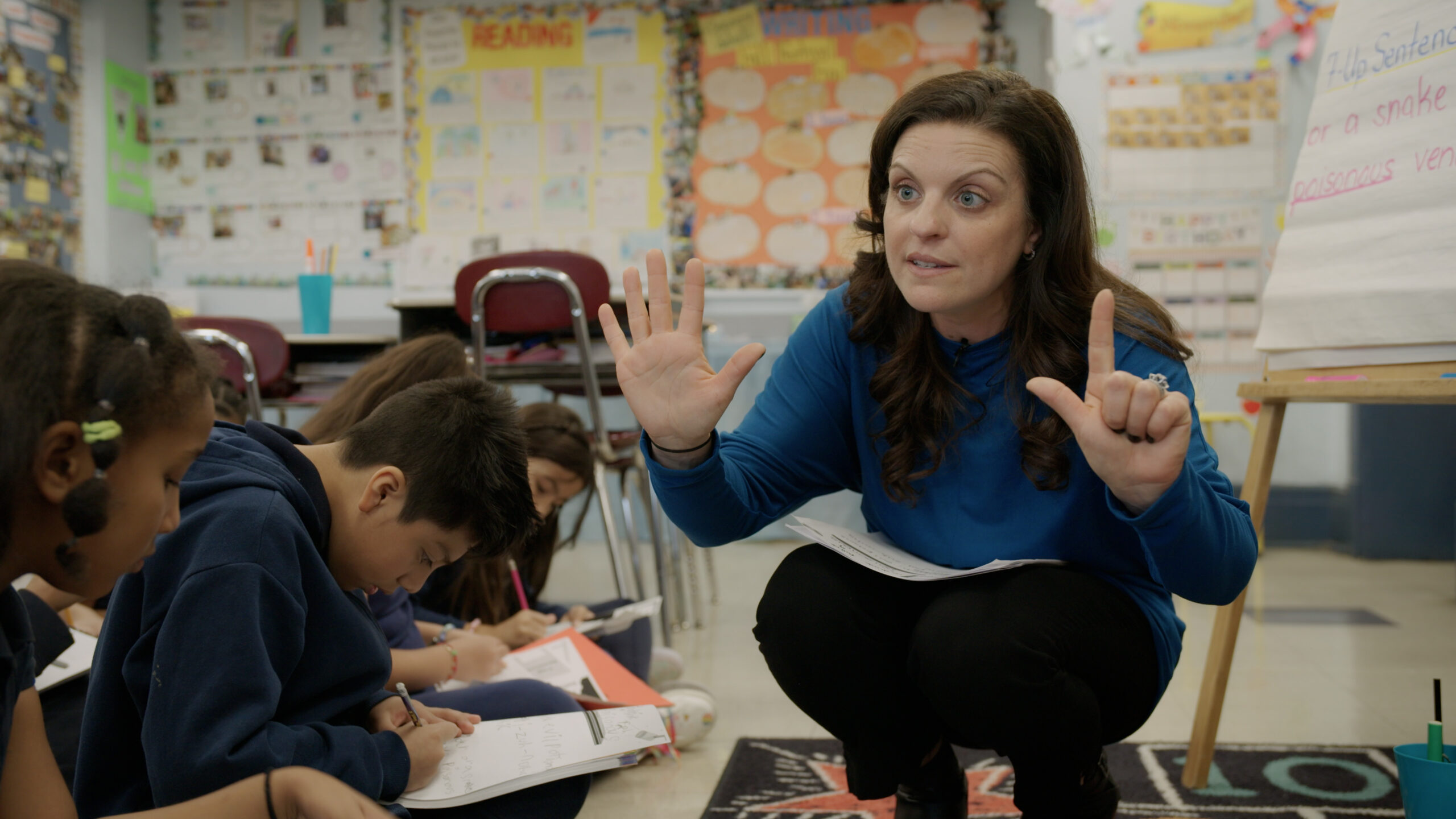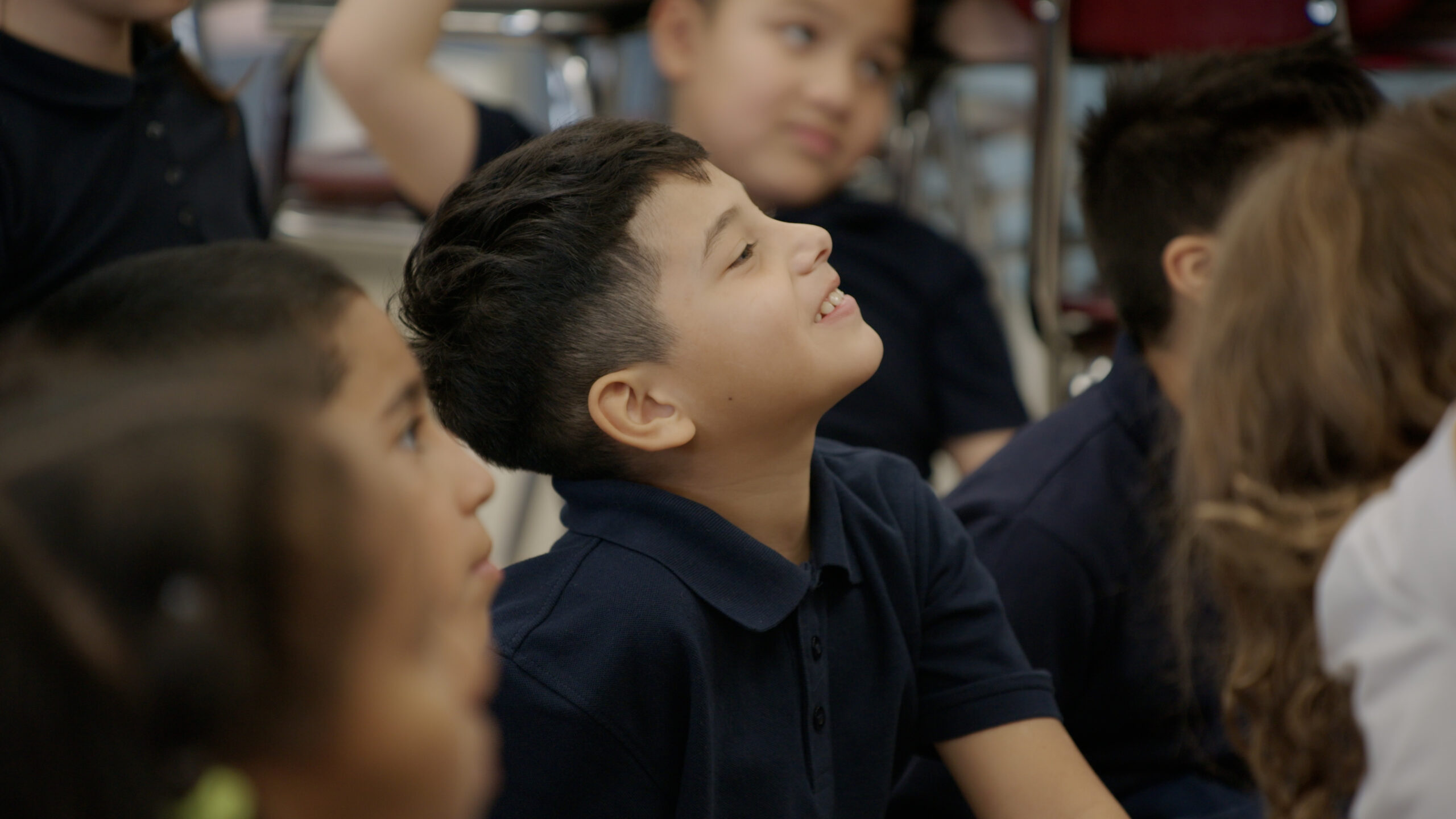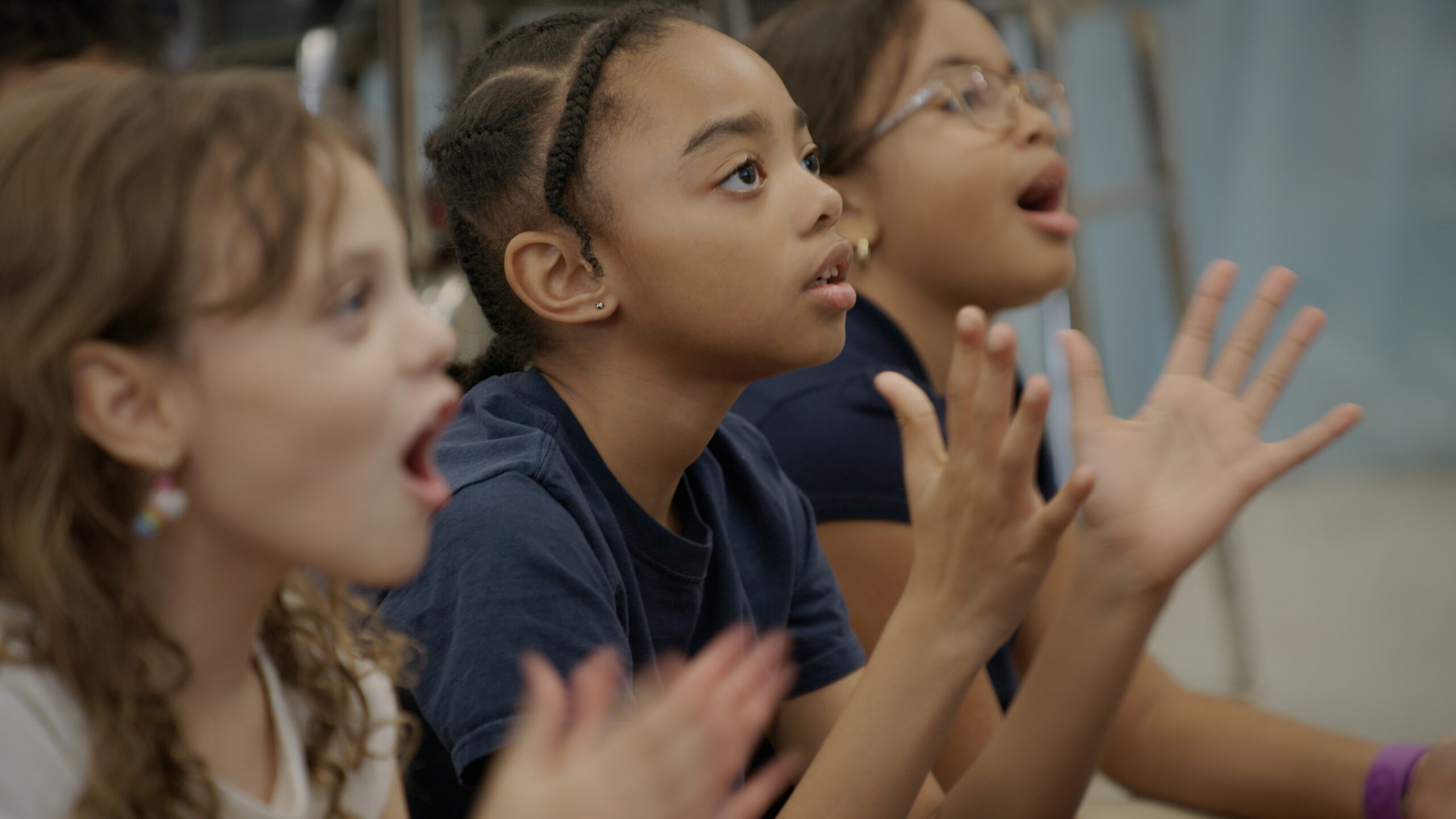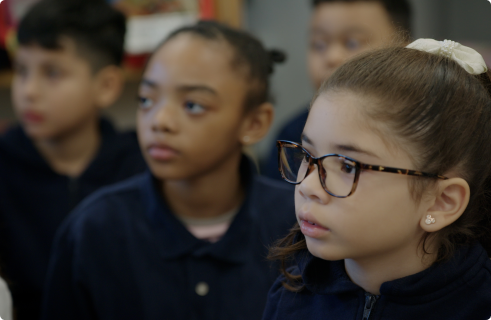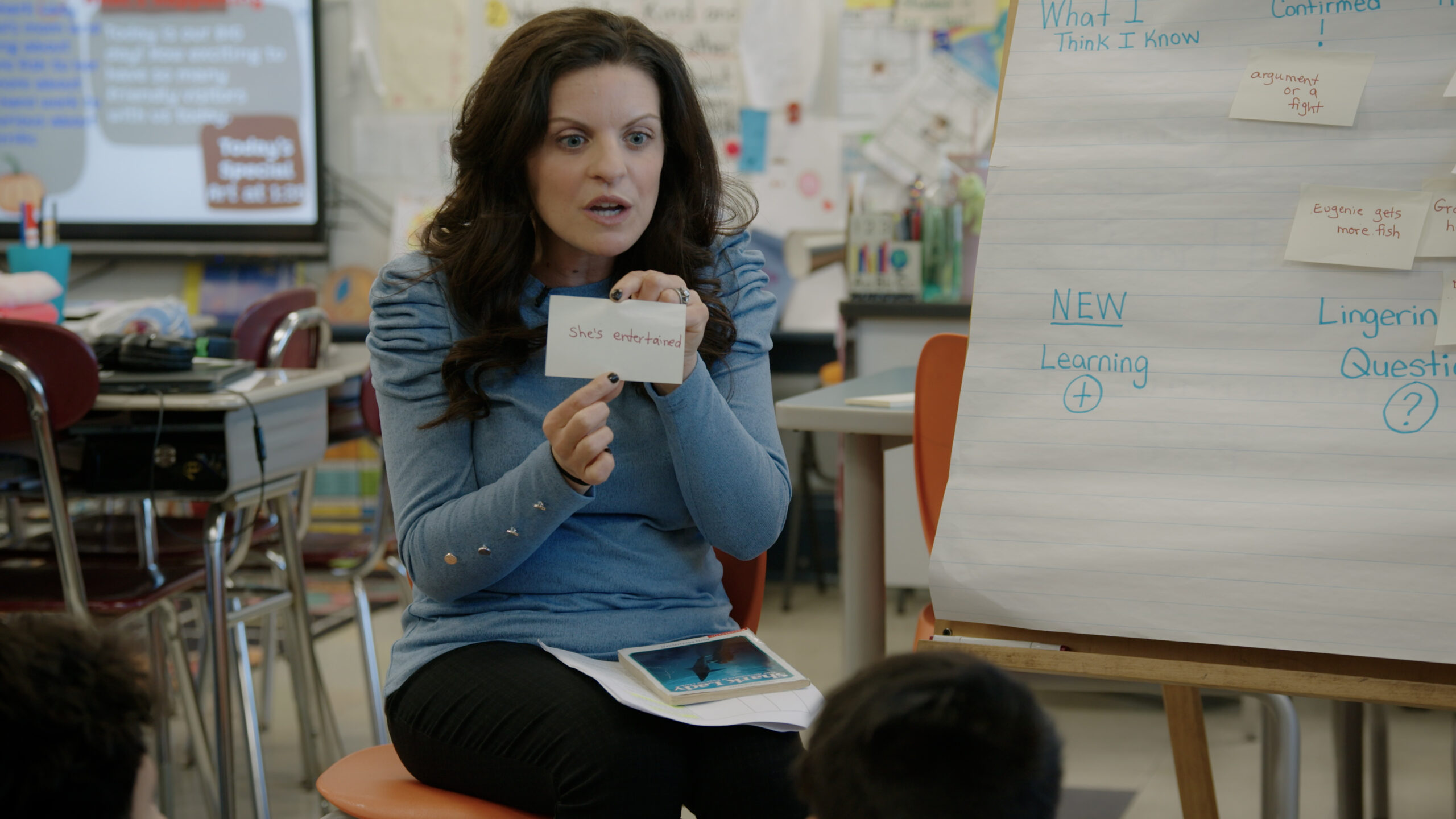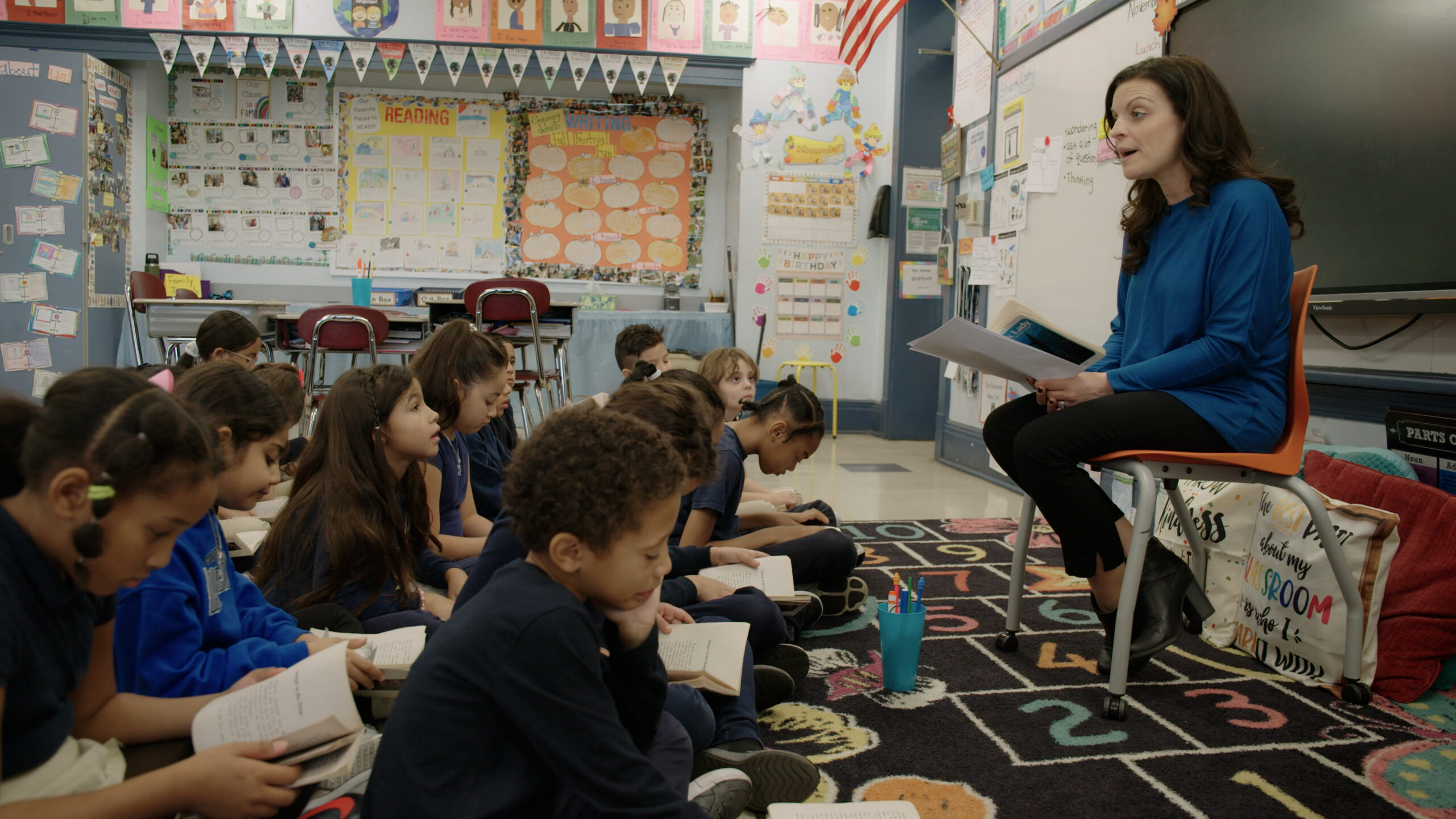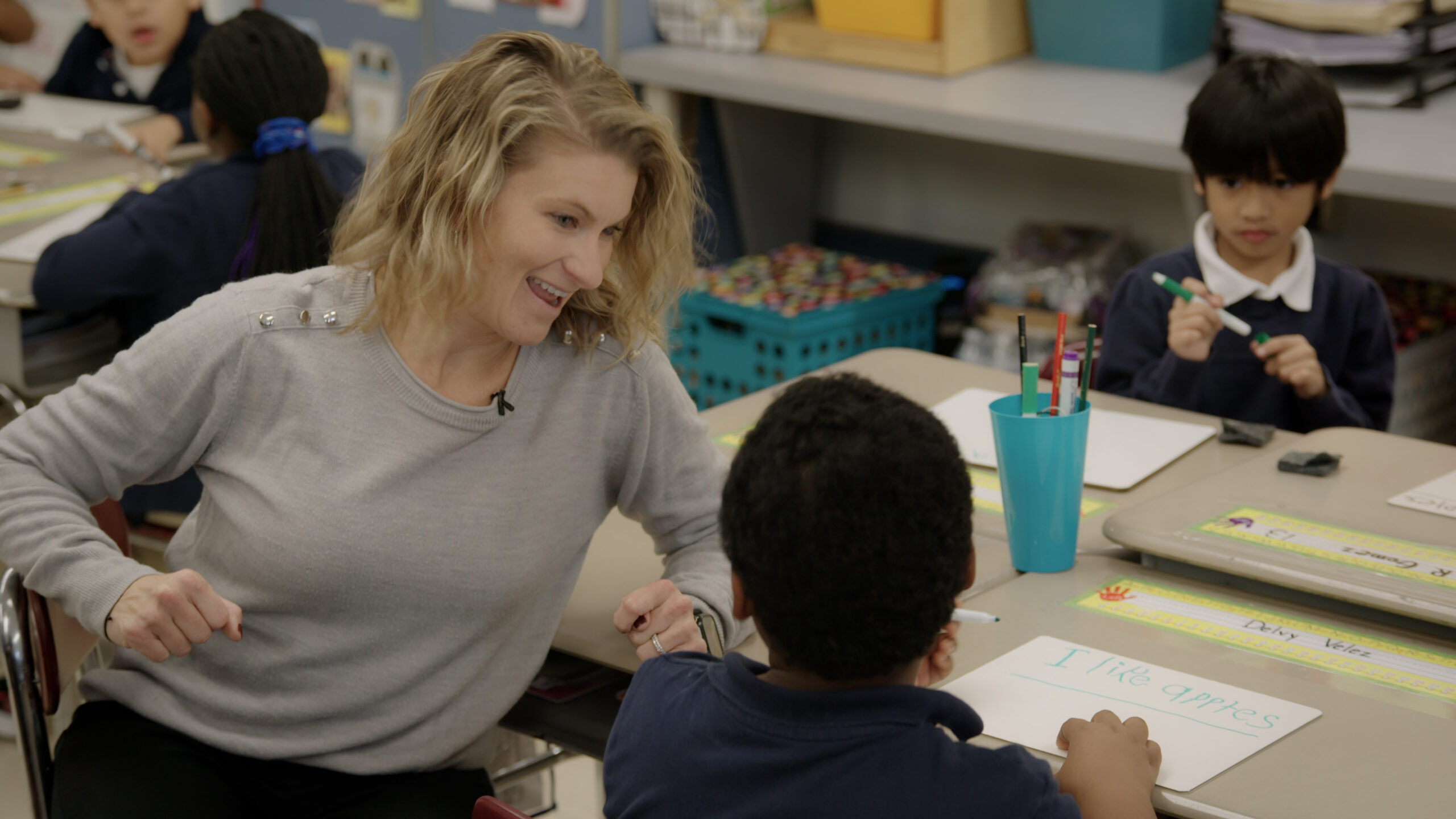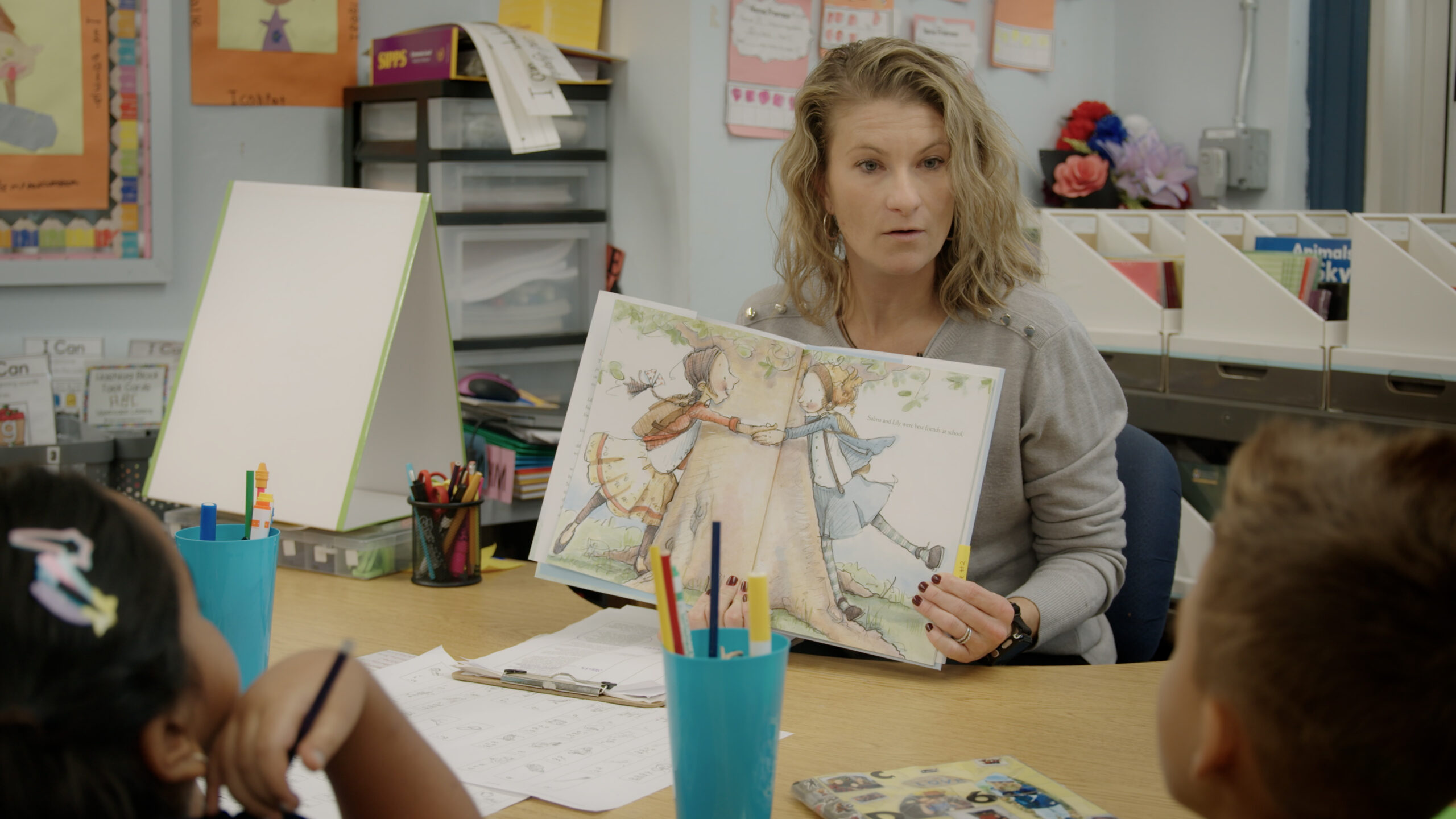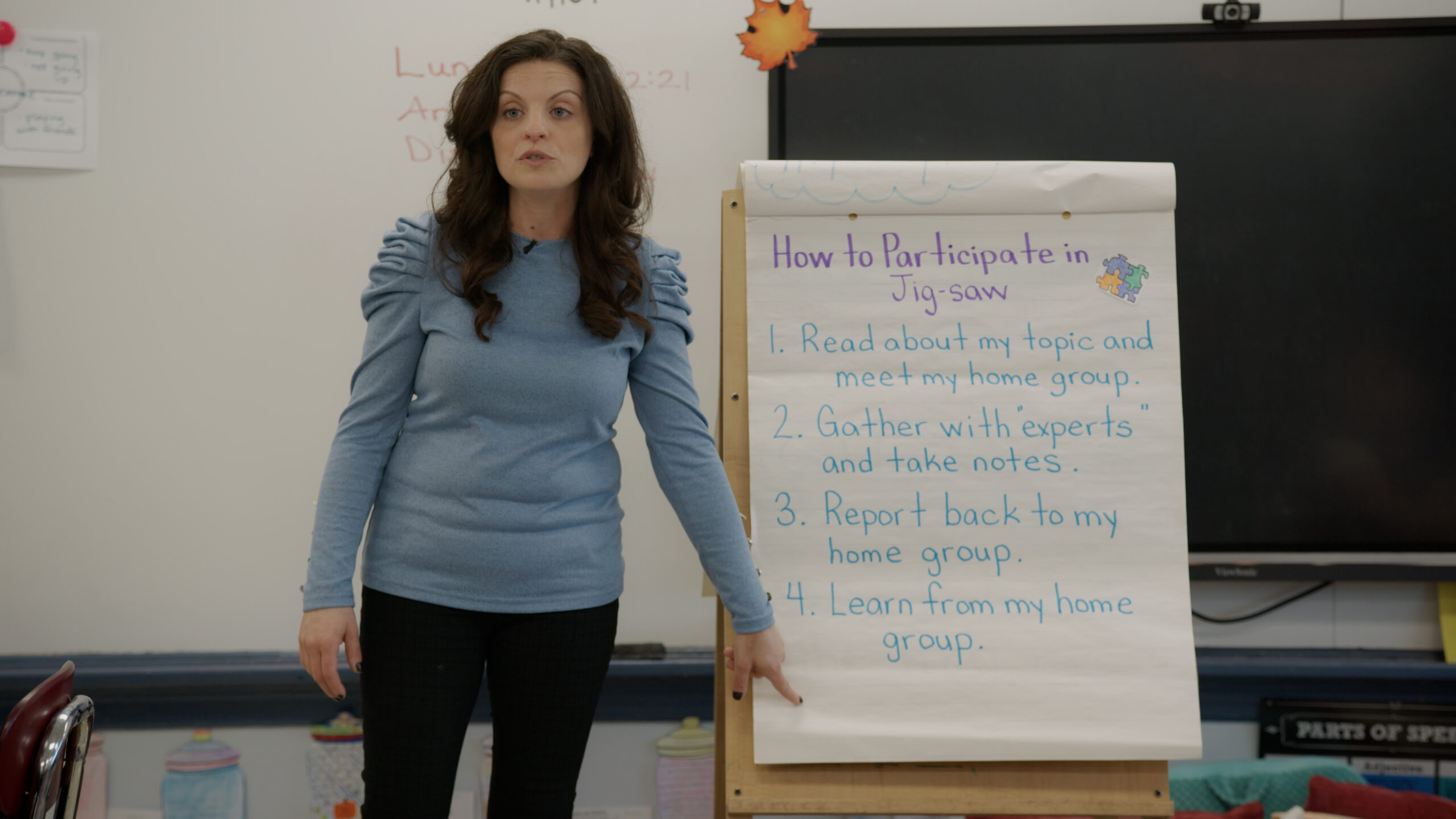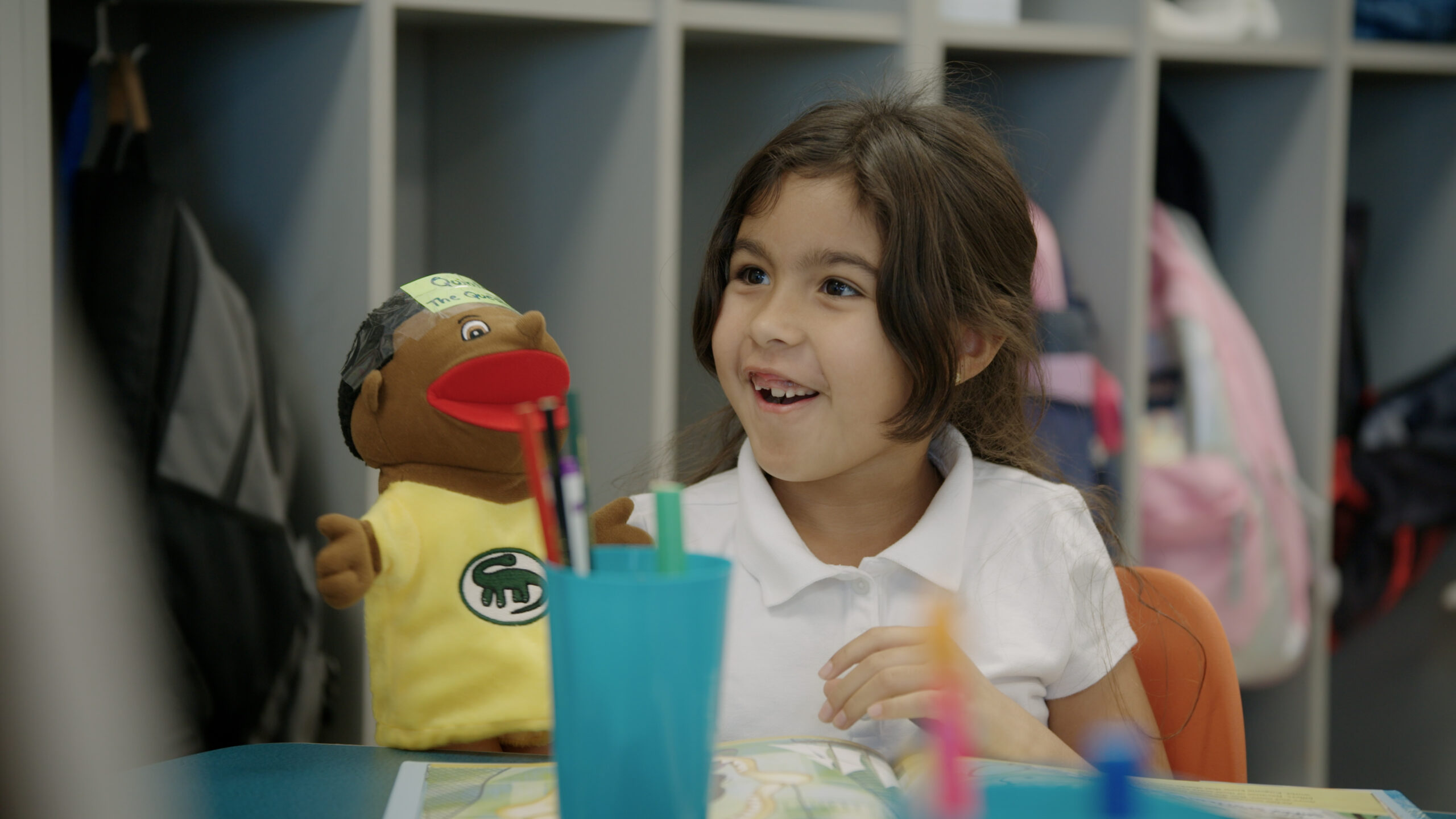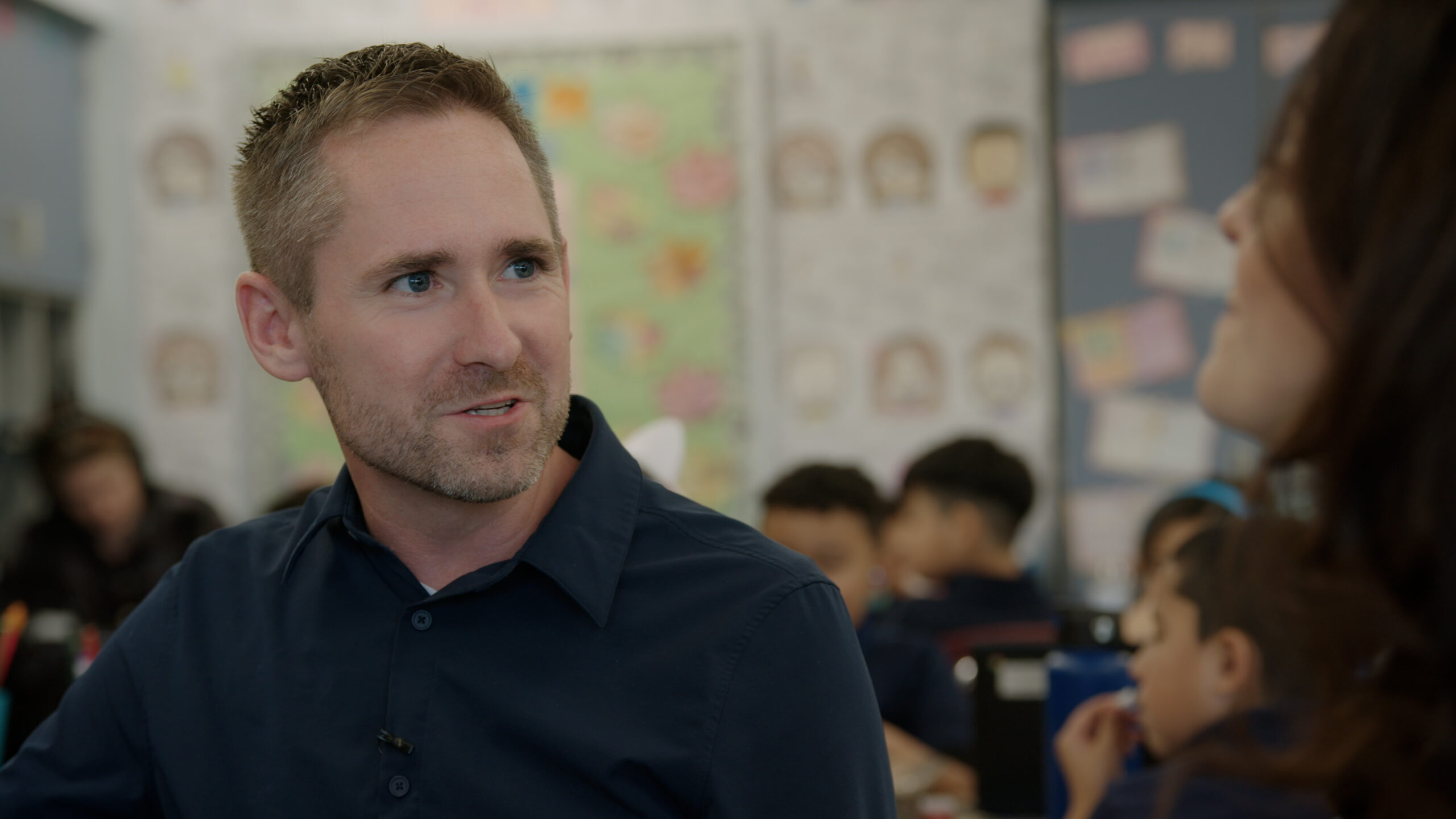Previewing vocabulary words with student-friendly Definitions
Selecting and Using Appropriate Vocabulary Words
The teacher provides brief, student-friendly definitions of pre-determined vocabulary words before a digital read-aloud of a text connected to their current thematic unit. Students are prompted to pronounce each word and practice a variety of activities such as talking to partners and acting out the meaning of the words.
Vocabulary-Enriched Messages: Using Word Maps
Selecting and Using Appropriate Vocabulary Words
The teacher embeds vocabulary into the morning message that considers students’ social, emotional, and academic needs and connects to their current reading unit. The teacher pauses to provide brief, student-friendly definitions to bolded, pre-identified words to support understanding of the message. Re-reading the messages for fluency and expression builds fluency, while extension activities, such as using a graphic organizer, reinforce reading foundational skills.
After Reading: Vocabulary Engagement
Specific Word Instruction
The teacher models activities for engaging with the tier 2 vocabulary words and engages in a text talk routine focusing on the word “poisonous.” The teacher provides multiple opportunities for students to pronounce the word and respond to prompts and examples illustrating the word’s meaning. The students are also given opportunities to discuss their thinking with others.
Tools for Vocabulary Acquisition
Specific Word Instruction
The teacher models a routine for focusing deeply on a vocabulary word by breaking down the word pronunciation, discussing word origin, discussing a simple meaning, and connecting to sentence writing. The students work in partners to co-create and independently write sentences using the tier two vocabulary word.
Suffix Discovery
Using Word Parts to Support Instruction
The teacher models Identifying word parts and meanings of a base word and suffix using a vocabulary word from a familiar text. The students discuss words with the same suffix with partners and the group comes together to determine the meaning of each word in student-friendly language.
Multisyllabic Words
Using Word Parts to Support Instruction
The teacher models breaking apart multisyllabic words by syllable. The students pronounce each syllable as the teacher visually connects each sound to the word part. After the students practice saying and clapping out the syllables for each word, the teacher provides a simple, student-friendly definition while connecting the word to a familiar text. The practice concludes with games as the teacher gives the students clues and they whisper the answer to their partners.

